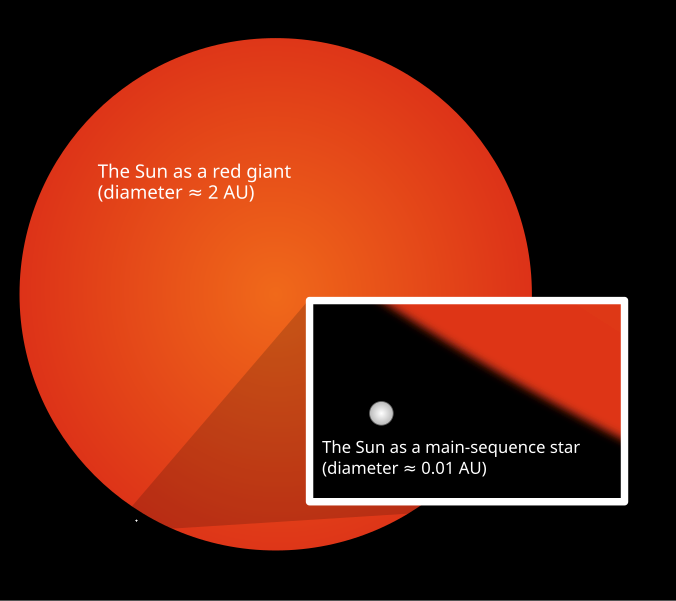-_NASA-SDO.gif/800px-Valentine%E2%80%99s_Day_Solar_Flare_(15_feb_2011%2C_class_X2.2)-_NASA-SDO.gif) |
| Our Sun, captured by Solar Dynamics Observatory. |
| The Moon eclipsing the Sun in 2014. Image Credit: SDO |
A star is a ball of hot gas, held together by its own gravity. It is powered by nuclear reactions taking place in its core. Nuclear power plants on Earth generate energy by fission, the process in which an atom's nucleus is split into fragments. The nuclear reaction taking place in stars is fusion, a process in which nuclei combine. In our Sun, two hydrogen nuclei (a single proton) are combining into helium nuclei, which contain two protons and one neutron. The fusion of these nuclei releases energy in the form of heat and light.
 |
| Image Credit: Wikipedia Commons |
 |
| Image Credit: Wikipedia Commons |
As the core contracts, it will get hotter, which will cause the outer layers of the Sun to puff up and expand. The Sun will become a red giant, eventually puffing up so large that it will swallow up Mercury and Venus, and possibly even Earth. After about a billion years as a red giant, the Sun's outer layers will drift away and the core will shrink down to a small cool star, a white dwarf. It would have a similar mass to our Sun today, but be about the size of the Earth, and shine very very faintly.
| One of the few imaged white dwarfs is Sirius B, the small dot of light near the very bight Sirius A. Image Credit: Wikipedia Commons. |
No comments:
Post a Comment